What do I need to know to drive in Italy? The definitive guide!
Using a car in Italy is a great option, especially if you are traveling with children or people with limited mobility. Another huge advantage is that you make your schedules, not having to wait for trains, buses and others. Most cities offer well located (central) parking lots and prices vary widely, but it is not absurd, they vary between 12 and 20 Euros per day. One of the disadvantages is the chaotic traffic in some regions and some restrictions in certain areas. Today we are going to talk about it and more! With this definitive guide you will be on the inside and know how to drive in Italy. We will answer your question: What do I need to know to drive in Italy? Also read our Definitive Guide to Driving in Italy Module 2! Here at Your Travel to Italy with Ana Patricia you make the trip of your dreams!!! ALSO: see our “Accommodation in Italy – Tips for your holidays!”
1) What do I need to know to drive in Italy? The definitive guide! CAR RENTAL
First, let’s rent the car! There are those who prefer to rent still in their country, over the internet, and there are those who prefer to rent on site. The problem with renting already in Italy is that there may not be the car you want (or the one that best fits your needs), although it is difficult to happen. Just in case, try to leave your country with everything organized. It is safer and when you arrive, just get the car at the airport and continue your journey. You can also choose to use a car rental near the train and subway stations, which facilitates commuting and you ‘run away’ from the “mess” at the airport exit. Find out more in our Driving in Italy section! You will find lots of tips and information for driving peacefully in Italy!
2) What do I need to know to drive in Italy? The definitive guide! VOCABULARY
Here are some very useful words related to car rental that you need to know. Also read our Post What are the most used words during a trip in Italy?
- Car rental: Autonoleggio
- Reservations: Prenotazione
- Subway station: Stazione della metropolitana
- Bus station: Stazione degli Autobus
- Train station: Stazione (del treno)
- Subway: Metropolitana
- Departure: Partenza
- Arrival / Destination: Arrivo / Destinazione
- Parking lot: Parcheggio
- Passport: Passport
3) What do I need to know to drive in Italy? The definitive guide! DOCUMENTS
What documents are needed? To rent a car, the rental company requests some documents that will probably also be requested when the vehicle is picked up if you have made the reservation online:
- Passport;
- Reservation voucher, if it was made online;
- IDP which is the International Driving Permit (to find out more, click here!) Or your driver’s license from your country with certified translation;
- Driver’s License – It is not a rule, but some rental companies request a driver’s license from your country of origin. It guarantees the rental company that you are able to drive, since the IDP is not issued in Italian and can be falsified. Between yes and no, take it with you; – TIP: Some countries have a legal agreement with Italy and their citizens are not obliged to have an IDP to drive in Italy. To be sure you need one, check at your Embassy when you are organising your trip.
- International credit card in the driver’s name with limit available to pay the deposit (which will not be debited, only blocked) and which serves as a guarantee for the rental company in case of problems such as accident or damage to the car due to misuse . The amount blocked on the card will be the total deductible from the contract + the value of the fuel + VAT / IVA (local tax).
Important to Know
- Minimum age for renting a car in Italy, minimum age is 21 and drivers under 25 may have to pay an extra fee to collect the car, the so-called ‘young driver fee’.
- Have copies (photos) of all your documents saved on your cell phone and send them to your email, including ID.
4) What do I need to know to drive in Italy? The definitive guide! TOLLS
How do tolls work in Italy? Well, on highways there is a toll charge and you remove the ticket when entering the highway and pay it when you leave the highway. The cost will depend on the distance traveled, in some sections the value can be fixed. Whatever the type of highway, the value varies between 5 and 10 Euros. To learn more about this subject, click here and read our special toll post.
5) What do I need to know to drive in Italy? The definitive guide! DRIVING RULES
Speed and driving rules and safety! It is also important to ALWAYS respect the maximum speeds indicated on the plates.
The speeds practiced in Italy are as follows:
Velocity
- In Urban Areas: 50 km / h;
- On secondary roads: 100 km / h;
- On Highways: 130 km / h – ATTENTION: in snowy seasons (in winter), or in times of intense rain (spring / autumn), the speed on highways is reduced to 110 km / h; in some sections there may be even lower limits, but they are always clearly visible.
- In Italy, you drive in the right lane and overtake through the left lane, and the demarcation of the yellow line on the ground (continuous / or interspersed) has the function of signaling: it may or may not overtake. NEVER OVERTAKE IN A PROHIBITED PLACE and without TOTAL view of the lane on the other side. And never, ever, drive on the roadside! In addition to being dangerous, it can generate a very high fine!
- There are numerous speed cameras on Italian highways, and several ARE NOT SIGNED! They are the famous ‘Tutor’ (speed control system based on the concept of average speed of a vehicle between two points on a highway), so it is better to always respect the speed allowed to not have any unpleasant surprises when delivering the car at the rental company, O.K.!?
- In Italy, there are double, triple and multiple lane highways. There are about 650,000 km of Italian roads including 6,661 km of highways.
Safety
- Safety items are mandatory in an emergency: it is necessary to use a reflective vest and the triangle in case of accident or problems with the car. Stop at the roadside, put on the vest, assemble the triangle, turn on the warning light and, after calling the rescue, wait. Being aware of the existence of these items, when taking the rental car, check if they are present in the trunk. If they are not: order them immediately! Do not travel without these basic safety items. Don’t stop at the roadside unnecessarily!
- The use of a low beam is mandatory on all highways with two lanes. Not using the headlights also generates a fine!
- The car horn should only be used in an emergency! Although in some cities like Rome and Naples, Italians think that honking will ‘helicopterize’ the cars in front of him stopped in traffic! It won’t and it’s annoying, but they are ‘at home’, so: let them honk! As you are ‘visitor’: avoid using it unnecessarily!
- Seat belts, for the driver and all passengers (including the rear seat), and child seats are mandatory items. It is necessary to inform the rental company if you need to use child seats informing the child’s age, ok ?!
Attention
- Buses and trams have priority in passing, always! Just like pedestrians. In several cities, especially in the smaller ones, THERE IS NO traffic light, so if you see a pedestrian on the sidewalk who wants to cross or if there is a blue sign indicating that it is a pedestrian crossing, stop and give preference!
- On the 3-lane highways, the right lane is reserved for vehicles with low speed and trucks (on highways where their traffic is allowed). It is also where access to exits to cities are. So, when you can, keep to the right.
- At intersections and roundabouts, vehicles that approach from the right have priority to pass.
- The alcohol limit allowed by Italian law is 0.05%, but, friend’s suggestion: if you are driving. DO NOT DRINK! Under no circumstances!
Emergency Number for Tourists
Another very important topic: to know what to do in an emergency! We hope that this does not happen, of course, but it is necessary to know how to act in the event of an accident, for example, thus write down and always take with you the emergency number for tourists: 800.116.800.
If something happens call this number, inform the police and then call the rental company, reporting what happened. Photograph your car, the license plate, if there are other vehicles involved take photos of their license plate and exchange information with those involved (phone, full name, document number). If there are casualties, immediately call an ambulance at number 118. If there is a fire at the scene of the accident, call the fire department by calling number 115.
6) What do I need to know to drive in Italy? The definitive guide! CAR INSURANCE
Important: the rental car’s insurance usually includes collision damage waiver (CDW) and vehicle theft protection (VTP). INQUIRE BEFORE taking the car to find out about extra coverages such as fire and natural disasters. Basic insurance limits the customer’s liability in case of accidental damage or theft to a deductible, that is, if something happens to the vehicle, part of the damage is covered by the insurance and the other part is covered by you. Ask what the deductible is before signing the contract!
7) What do I need to know to drive in Italy? The definitive guide! GAS STATIONS
Gas stations in the main cities operate from 7:00 am to 12:00 pm and from 3:00 pm to 7:00 pm, but as many of them use the ‘fai da te’ system (self-service), it is possible to find gas stations that operate 24 hours a day, especially those on motorways. TIP: Never travel with the tank in half. Fill up before leaving for your destination, it is safer.
8) What do I need to know to drive in Italy? The definitive guide! GPS
GPS is another important subject to mention. Car rental companies do not normally include the device when renting a car and renting a GPS can cost between 15 and 20 Euros PER DAY! As Italy has some cities with the same name, but in different regions, before traveling, buy a map of Italian roads (they sell it at newsstands, called Tabbachino) or use an offline map on your phone. And be careful and pay a LOT of attention because the GPS often sends you to a ZTL (learn more by clicking here) or some one-way street, for example. So, stay tuned! Just in case, do not enter where it is commanding!
But how do I know what kind of highway I am on?
Well, a three-lane highway is called a ‘highway’ and is subject to toll charges. Motorways are designated with an A in front of a number, for example A1, which is the main motorway between Milan and Rome, and the signs indicating them are green. The SS are state roads, also accompanied by a number.
IMPORTANT INFORMATIONS
The following is some important information for you to follow when driving in Italy.
Caution on Highways
On the highway never go left, use this lane only for overtaking. Always choose the middle lane or the right lane. And as we already said: it is mandatory to travel with the headlights on, even during the day! Avoid an unnecessary fine. In southern Italy, in particular, DO NOT stop to help people on highways or roads: it is a means of assaulting tourists. AND NEVER GIVE A RIDE! NEVER, BY NO MEANS!
As we have already said, the speed limit on motorways is normally 130 km / h, but in some sections the maximum speed can be 110 km / h and, in more dangerous sections, as in many curves, for example, the speed can reach a maximum of 60 km / h. There are also cases, when there are works on the track, in which the maximum speed will be reduced, but warnings will be given before, during and after the stretch informing the maximum speed allowed there, so pay attention to the signs.
Velocity
People: if you see a Ferrari, Mercedes, BMW or other powerful car approaching behind you, or if you see a Fiat Uno ‘faster than it should be’: go right and let them pass . Italians LOVE (“lead feet”!) running (really!) and they run even with cars that can dismantle at any time, like a Uno, since it is a car made to go at a maximum of 90 km / h, but they get to 120 very easily hahahaha! Speed is in the Italian blood, they already know the roads, many of them don’t care for fines, so: leave them! Ah: and don’t take offense, okay ?! They are like that! Ignore it!
Italian Radars
In addition to the ‘tutor’, there are also Autovelox (more ‘modern’ version of Italian radars! Hahaha). The difference is that the Autovelox is signaled (the tutor does not have this obligation to be signaled) so it is good to respect the speed because we are never sure where there will be a radar. Autovelox is marked with the information: ‘polizia stradale, controllo elettronico della velocità’ (road police: electronic speed control). As the road system is interconnected, if the camera of any radar takes a picture of your car, it goes straight to the center that will have information about you and, amazingly, about your credit card: yes! They have access to all the rental car movement in the ENTIRE country: they know who rented it, where it came from, their card number, so don’t joke about it, right ?!
Fines in Italy
Speaking of fines, Italy has long used the system that calculates its AVERAGE of speed between stretches with maximum speed. How it works? In some sections of the highway there is a camera that takes a picture of your license plate when you pass the ‘first point’.
When you get to the next radar, another picture is taken and, for the distance and time traveled between the two cameras, your average speed is calculated, that is: there is no point running where ‘there is no autovelox’, because the ticket will arrive the same way, since if you exceed the allowed speed, you will arrive ‘before’ the next camera. Smart, isn’t it ?! And the system works very well, impossible to cheat on it! What happens if I don’t pay the fine? Read the post: What happens if I don’t pay the fine?
Toll Machines
Not all toll machines accept credit cards, so always carry cash in your pocket. If you can’t pay right away, you can pay later, but be sure to pay, huh ?! To learn more, read our special toll post by clicking here!
Rest Stops
Along the highways there are several rest stops: large areas where gas stations, bars, restaurants and the famous Autogrill are located – which combines a convenience store, bathroom, etc. A tip is to never open the trunk in these places, they are not the safest places in the world, so the more discreet your movement is when you stop in these places, the better!
It is also quite common there to find people who will insist on washing the car’s windshield even if you don’t ask them to. If that happens, there is no need for drama, scandal, saying that you didn’t ask or anything: give a euro or two to the ‘author of the work’, thank and walk away.
We are almost done with our post…
Do not forget to leave your question or opinion in the comments section of the Blog.
Car Flow in Italy
Peak hours in major cities are from 6:30 am to 9:00 am and from 5:00 pm to 7:30 pm. Avoid driving at all costs, especially in large metropolitan areas (big cities!). It is super stressful, time consuming and noisy! Sunday is a good day to drive on the highway, because trucks cannot circulate!
During the summer it is good to avoid traveling by car at all costs on some specific days and times: Friday night, Saturday morning, Sunday afternoon and Monday morning. There are places where everything is stuck! Imagine the headache! So, avoid it! Italians love to stroll on the weekends, which means that many leave the city and, as a result, the cities are quite empty between Saturday morning and Sunday afternoon. In summer, of course, the roads to the coast and those around the northern lakes become very congested, especially at the weekend, so avoid if possible!
Driving in the Snow
In regions with ski resorts, you need to ask the car rental company for special snow tires and ask them to leave the tire chains in the trunk. To learn more about driving in the snow, read our post dedicated to this subject by clicking here! It is worth remembering that it is difficult to drive in the snow even for those who are used to it, so it is necessary to carefully analyze whether it is worthwhile or not to venture, as it can be quite dangerous; the thin layer of ice can cause the car to skid.
Another point to be considered is that some roads are closed because of snow, so it is often necessary to make a much larger path to reach your final destination safely. Knife! Don’t want to ‘save’ time; it’s your safety at stake, so follow the guidelines. At the hotel reception you can ask for information about road conditions before leaving. It is also possible that the civil defense issues an alert and, it may happen (although it is very rare!), That they totally prohibit the traffic of vehicles, again, follow the guidelines!
Roads in Ancient Cities
In ancient cities the roads can be thousands of years old and, many times, it was designed only for the passage of a horse or, at most, of a cart, that is: they are very tortuous roads to pass by car so avoid them! Especially because they are roads that do not allow maneuvers, do not offer parking and, to stop there, not a chance. So, to visit historic centers, go on foot or call a taxi.
9) What do I need to know to drive in Italy? The definitive guide! PARKING
Where to park in Italy? Italy divides its street parking well. If you see a sign indicating ZCS, ZTL or any other restriction sign: DO NOT STOP FOR EVEN FIVE MINUTES! IT MEANS FINE! The Italian police are very strict and you can argue with your best Italian: they will hear you, shake your head and say ‘OK, here’s your fine, please remove the vehicle!’. Also read Where to park in the main Medieval cities? and Where to park in Florence?
ZCS – Zona a Sosta Controllata (Controlled Parking Area)
They can be easily found in historic centers. A lot of attention to the signs: parking here definitely means fine. Pass straight!
ZTL – Zona di Traffico Limitato (Limited Traffic Zone
It comprises an area within some cities where traffic is only permitted to residents, means of public transport, taxis, those who work in the area or to authorized vehicles (delivery trucks, for example). Visitors should park their cars nearby and go on foot or by bus to these areas. To learn more about the ZTL, click here.
In the Pedonale Area (pedestrian area)
The rule is the same. They are very common in historic centers and small towns. A special license is required to drive in a ZTL and some central hotels offer this facility to guests by providing a card to put in the car. Check with your hotel and make sure the hotel has already informed the license plate to the local police. To learn more about the ZTL, click here.
Blue (marked vacancies) line
Public parking authorized for all WITH PAYMENT of parking meter. Pay using the machines available near the spot and place your ticket on the vehicle’s dashboard in a visible way.
Yellow (marked vacancies) line
Parking reserved for public vehicles or people with special needs who have the Disabled European card. Do not use these vacancies, it gives you a fine!
White (marked vacancies) line
Free parking, but, ONLY for residents. They are cars that have registration and authorization to park there: DO NOT USE THESE VACANCIES, you risk having the car towed!
Private Parking Lots
Cities offer good private parking lots options. In the Italian streets there are no “car watchers”, which charge for parking and indicate spaces; in fact, finding a place on the street is an almost impossible mission. On the blue lines, parking is paid for using a machine called a parking meter, blue in color and easy to locate. They are identified with a blue sign and the letter ‘P’.
After paying the amount, place the receipt inside the car, on the windshield, as said earlier.
Important Tip
- Don’t skimp on ‘feeding’ the parking meter! Even if you pay more than you will be staying, it is better not to take any chances or have to take the tour in a hurry.
- It is also important to know the main signs, as much as they look like you are used to, some of them may be new, so get familiar before you travel! You can learn more by clicking here!
Traveling by car in Italy
How about if I give you a rental car option? Are you ready for it? If you are renting a car be sure to read our posts in the section Driving in Italy on the blog Your Travel to Italy. In addition to car itinerary tips, we have everything about signage, tolls, roads and many more tips.
Don’t know where to rent the car?
We have a partner that can help you: Rent Cars! Have you ever thought about renting a car in Italy, without leaving your home? Click on the banner below to learn more! Search, compare and choose!
Conclusion
What do I need to know to drive in Italy? The definitive guide! . Although there is a lot of information, just follow the rules, drive carefully and enjoy Italy by car! It will be unforgettable! If you feel insecure or have no time, and need help to organize your trip, do not hesitate to look for me! I will love to help you make your dream trip to Italy. And how can I do that? Continue reading this post until the end and you will understand how can we make your life and journey easier
Did my post help you? If yes, make sure to leave your comment below, but if you still have questions, just leave them as a comment below and I will reply, O.K.?
An Extra Help for your Trip
The best content from Your Travel to Italy!
Learn more about our tours in Italy right now!
- What to visit in Italy in 10 days?
- The ten must-see places in Tuscany?
- The best tips to save on your trip to Italy?
- What are the 10 most visited cities in southern Italy?
- Airports in Italy? How to get to your hotel? (Venice, Milan, Rome, Florence)
- What to do in 1/2/3/4 days in the main Italian cities?
- The best tips on food in Italy (wines, typical food, enogastronomy tours)
- How to get from Fiumicino Airport to Rome downtown?
- Your Travel to Italy: 10 tips for traveling through Italy!
Best regards from Italy

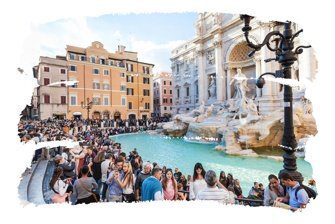
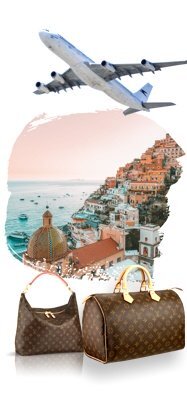
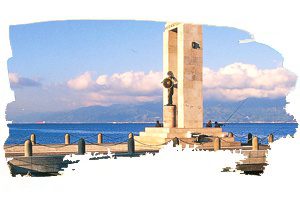
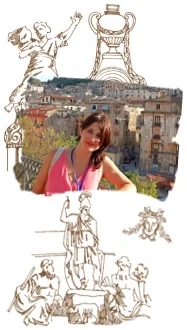


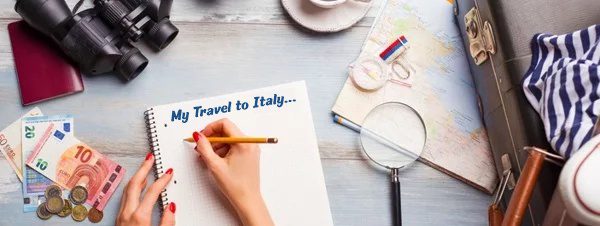
 Save money!
Save money!